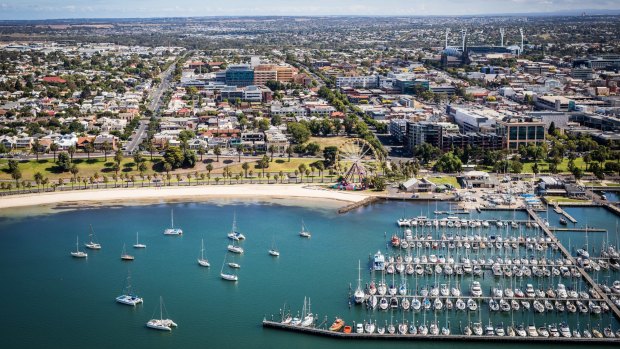“The flight from the city may have been exacerbated by the pandemic, but it began earlier,” he said.
Loading
“Where previously it was common for industrial workers to move out of cities, we are now seeing all types of workers, including managers and professionals, leaving Sydney and Melbourne.
“In many cases, higher wages are not enough to offset the higher housing costs associated with living in the city. ”
Industrial workers, such as truck drivers and labourers, have been the worst hit. Their average wages were already $1000 a year lower than their regional counterparts, but after the surge in house prices, they are now $10,000 worse off every year.
Low-paid workers in the care and service sectors have also been hard hit by climbing house prices.
These people earn on average $2620 more in capital cities but after housing costs are taken into account, they are $8250 worse off every year.
The surge in house prices relative to incomes is now hitting the highest-paid residents of Sydney and Melbourne.
A person in the knowledge sector such as a doctor or graphic designer was $11,500 a year better off in 2012. By 2022, they were only $700 better off due to the quick rise in housing costs over that period.
From 2012 to 2022, Sydney’s median house value rose by 110 per cent, but wages grew by just 25 per cent. In Melbourne, house prices grew by 95 per cent and wages by 27 per cent.
Between 2016 and 2021, a net 130,000 people left Sydney and 25,000 left Melbourne every year. Without immigration, Sydney’s overall population would have fallen.
Melburnians forced out by dearer housing are more likely to move to outer suburbs or regional centres. Sydney residents are heading to the Central Coast or Wollongong or leaving NSW altogether.

Regional centres such as Geelong and Wollongong are attracting residents priced out of Sydney and Melbourne.Credit: Visit Victoria
Those who remain are heading to cheaper housing on the urban fringe, a move that comes with its own cost. The proportion of people taking long commutes to work, measured at more than two hours in a return trip, has climbed faster in Sydney and Melbourne than in other capitals.
Industrial workers — those with the biggest fall in relative wages — have suffered the biggest increase in commuting times.
La Cava said Australia’s productivity had flatlined for the past decade and that it was unlikely to turn around if highly educated workers continued to move from the best-paid and most productive areas.
House values have started falling in Melbourne and Sydney. CoreLogic last week reported Melbourne’s median house value edged down 0.2 per cent in October, and 1.8 per cent in the past year. Sydney values slipped by 0.1 per cent last month.
Data from the Australian Bureau of Statistics show average mortgages continue to climb.
The average mortgage in NSW reached $779,239 in September, an increase of 3 per cent or $22,418 over the past year. Victoria’s average mortgage climbed by 3.5 per cent to $614,730.
One of the biggest increases has been in Queensland, where the average is now at almost $620,000, surging by 15.2 per cent since September last year.
